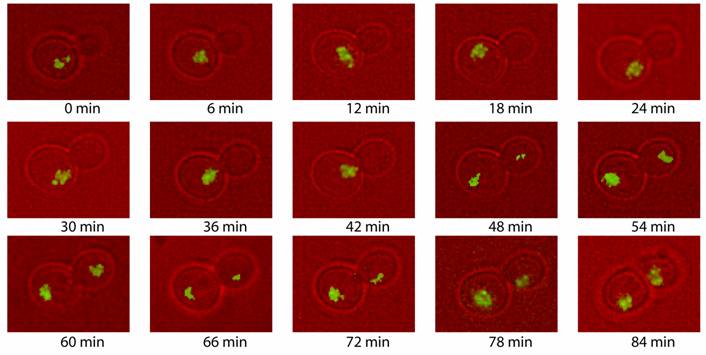
|
Project 1: Plasmid Partitioning During Cell Division
The yeast plasmid, 2 micron circle, maintains itself stably in the nucleus at approximately 40-60 copies per cell. The plasmid partitioning system consists of two plasmid coded proteins Rep1p and Rep2p and a cis-acting locus called STB or REP3. The plasmid molecules are replicated by the host replication machinery, each molecule replicating only once per cell cycle. The replicated copies are then distributed equally to the daughter cells at cell division, provided the plasmid partitioning system is functional. Recent results on the plasmid partitioning mechanisms are quite exciting. We have developed methods that allow us to directly visualize plasmid molecules in living yeast cells during the progression of the yeast cell cycle. The plasmid appears to exist in the yeast nucleus as a single cluster and to segregate as a cluster. This effective copy number reduction from 60 to unity justifies the need for an active partitioning system. Our latest findings suggest that the plasmid feeds into the highly efficient segregation machinery established for partitioning the yeast chromosomes. By combining cell biology, biochemistry and molecular genetics, we will continue to study the mechanistic details of plasmid segregation. |
|
Plasmid segregation during cell cycle |